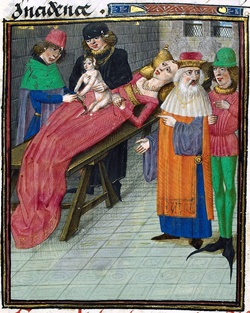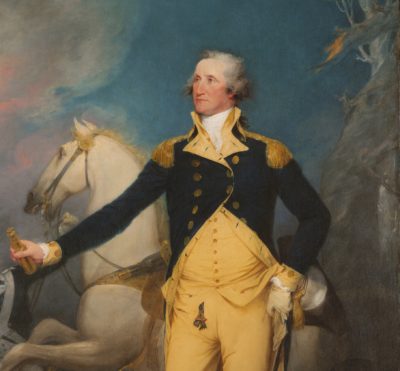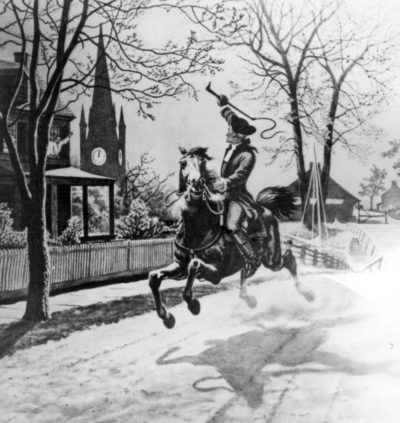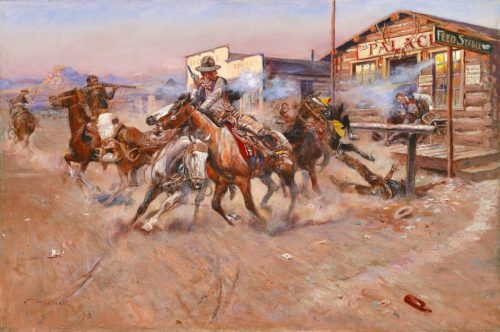10 History Facts You’re Probably Getting Wrong
“It ain’t what you don’t know that gets you into trouble,” Mark Twain once wrote. “It’s what you know for sure that just ain’t so.”
To help you avoid a little trouble in the future, we present a handful of historical myths that are commonly believed, but “just ain’t so.”
1. “Caesarean Section” got its name from Julius Caesar, who was born by this method of delivery.

No records indicate Caesar was born by C-section. In fact, doctors in ancient Rome only performed this procedure on mothers who were dead or dying, and Caesar’s mother was reported to still be alive when Caesar was in his 40s. The word “caesarean” is probably an alteration of older Latin words for “cut” or “postmortem birth.”
2. Nineteen women accused of witchcraft in Salem, Massachusetts, were burned at the stake.
No “witches” were burned at the trials, which took place between February 1692 and May 1693. All nineteen women were hanged. Although no Massachusetts women were burned at the stake, it is estimated that many European women were. Of the 40,000-50,000 women who were executed for being witches, burning was the preferred method because it was said to be the most painful.
3. All men in the Revolutionary War era wore wigs.
Wigs became popular in the 1600s when an outbreak of sexually transmitted diseases caused many men to lose their hair. By the 1700s, long hair was still stylish, but wigs were on their way out. A historian at Williamsburg estimates that 5% of the population in colonial Virginia wore wigs.

Soldiers kept their hair long, but they powdered it to make it resemble the powdered wigs of the previous century. George Washington’s hair, which you see represented on the quarter and dollar bill, was all his own.
4. On the night of April 18, 1775, Paul Revere rode through the Massachusetts countryside, shouting “the British are coming.”
The purpose of Revere’s ride was to warn the militias in Concord that the British regular troops were on their way to seize weapons and supplies the patriots had stored there. He was also ordered to warn Samuel Adams and John Hancock in Lexington that the British would probably be coming to arrest them. He did not shout “the British are coming” because it would have made no sense. At this point, most colonists still thought of themselves as British. And he wouldn’t have shouted in general because he was trying to avoid arrest by British regulars on the road.
Revere alerted the militia in Medford and Arlington before reaching Lexington and passing on his warning to Adams and Hancock. Revere proceeded to Concord but was caught by the British, questioned, and released. End of ride.

5. There were no survivors from the Alamo.
After overwhelming the men holding the Alamo in 1836, Mexican troops executed 200 of the surviving soldiers. However, 13 wives and children of Texan soldiers were allowed to leave. The Mexicans also released a slave of William Travis and a Hispanic man who fought with the Texans but convinced the Mexican soldiers he had been a captive.
6. The early days of the American West were a time of widespread lawlessness; shootings were common, as were bank robberies.
The truth of this assertion is hotly debated, with both sides citing quite different figures. However, one statistic shows four Kansas cow towns were more peaceable than their reputations. Between 1870 and 1885, the number of gunshot deaths in Wichita, Abilene, Dodge City, and Ellsworth was 45.

The total number of bank robberies in 15 western states between 1859 and 1900 was probably less than 10. By way of comparison, there were over 4,000 in the U.S. in 2016.
7. Thomas Edison invented the light bulb in 1879.
At least two men were ahead of Edison in the light bulb’s development. In 1802, Humphrey Davy created an electric arc lamp, and in 1840, Warren de la Rue produced a light bulb with a platinum filament.
8. After the Wall Street crash of 1929, many stock brokers committed suicide by jumping out of the windows of their offices.
The suicide rate in Manhattan rose only slightly after the crash. Only two men are reported to have jumped from a tall window. (The rate of suicides was actually higher in the summer months before Black Friday.)
9. Charles Lindbergh was the first man to fly nonstop across the Atlantic ocean.
John Alcock and Arthur Brown flew a Vickers Vimy biplane across the Atlantic in 1919. They took off from Newfoundland and landed in Ireland.
10. Every statue of a military hero on horseback tells the fate of the rider. If one hoof is raised, the rider was wounded in battle. Two hooves raised meant the rider died in battle. And a horse with all hooves down indicated a hero who survived all battles.
This rule of — hoof? — is not dependably true. For example, some of the equestrian statues at Gettysburg follow this code, but not all. In Washington D.C., only a third of 30 statues of heroes on horseback comply with this custom.
Featured image: Shutterstock
